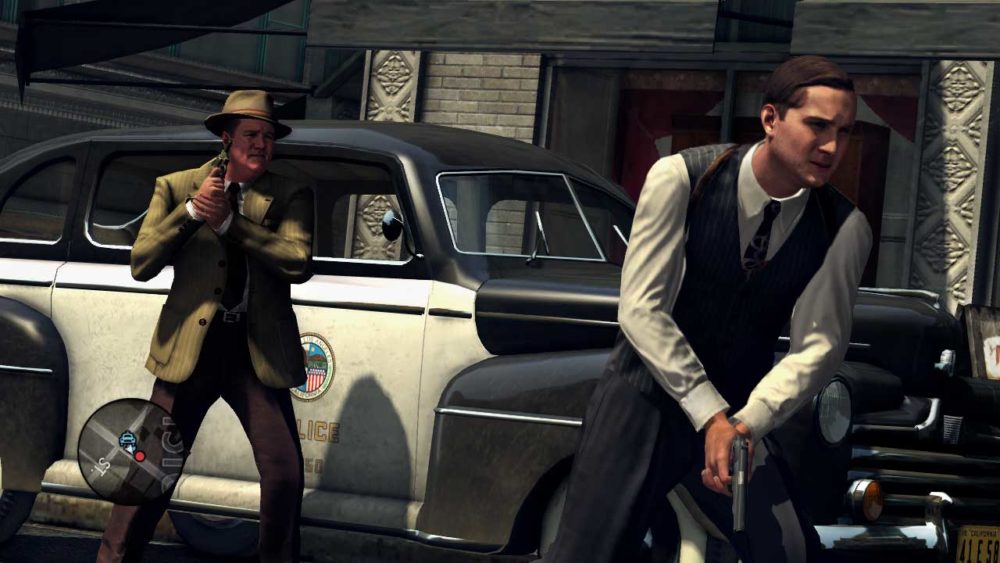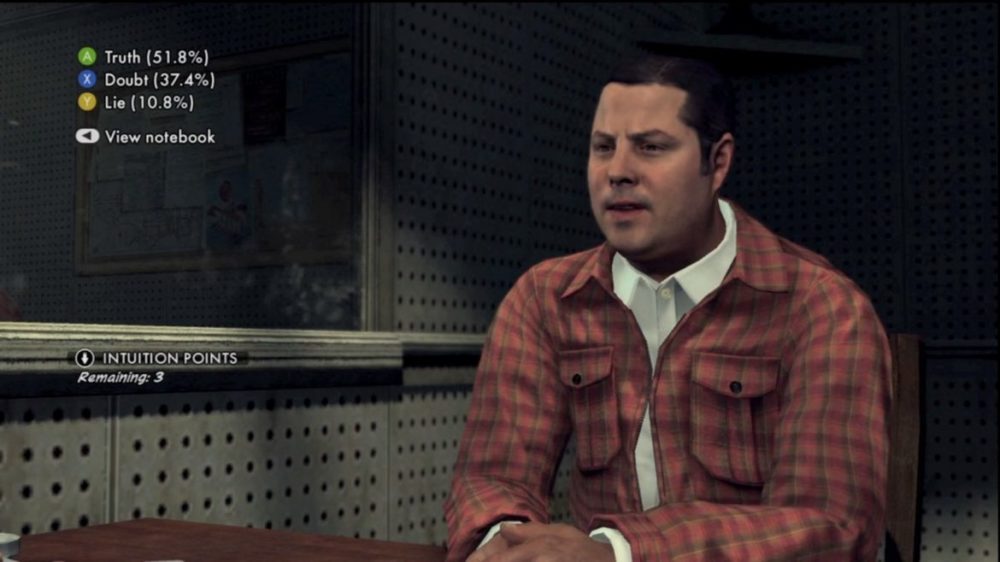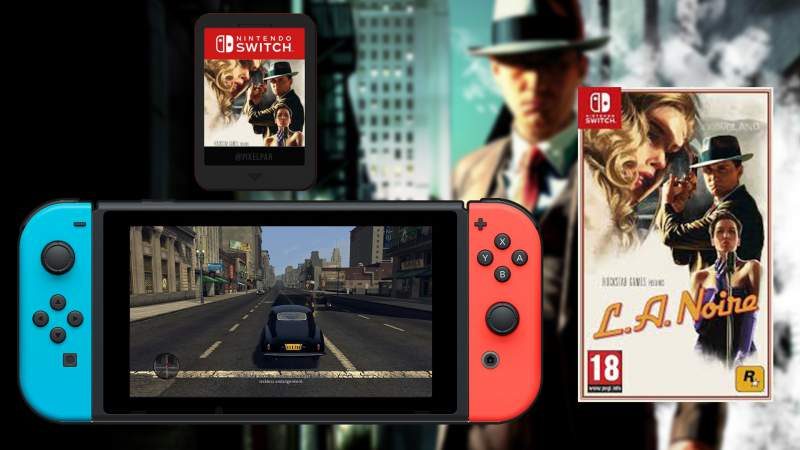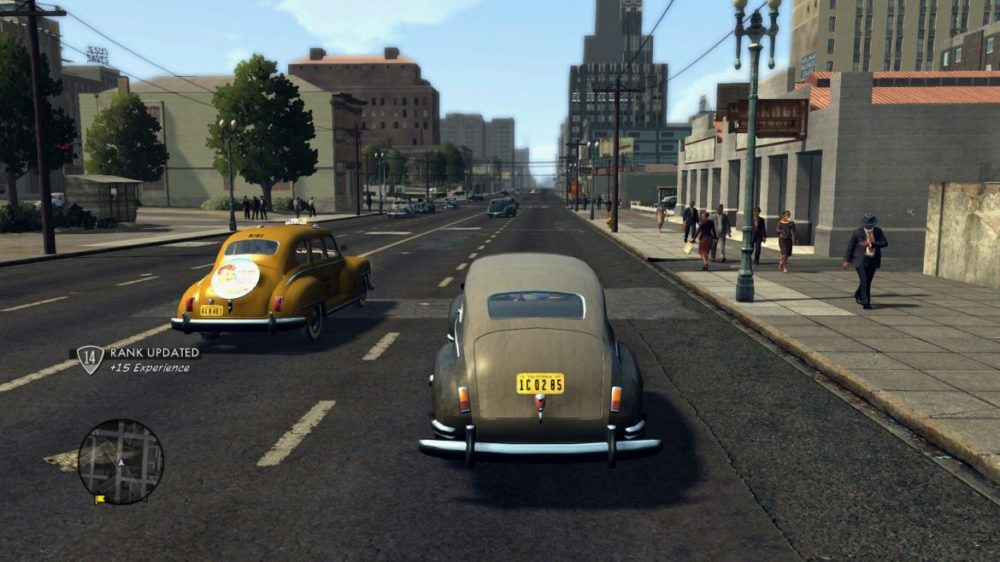TL;DR
LA Noire’s gritty 1940s detective story still holds up, offering a deep narrative and meticulous world-building. While the Xbox One X delivers a sharp 4K HDR experience, it suffers from frame rate dips and occasional pop-in. The Nintendo Switch version sacrifices graphical fidelity for portability and unique motion/touch controls, though it also requires a significant download and has more frequent performance issues. Despite its age, LA Noire remains a compelling investigation game, especially at its current price point. Ready to solve some crimes and see how it stacks up on your platform? Dive into the full review to find out!
It was during the last console generation that Rockstar Games shifted gears from their blockbuster GTA series, presenting L.A. Noire, a narrative-driven detective game developed by the now-defunct Team Bondi and set in 1940s Los Angeles. True to Rockstar’s form, the ambition is palpable; the recreation of Los Angeles exhibits meticulous detail, capturing the essence of the era. Historical accuracy is evident in the inclusion of buildings that existed at the time, some of which have since been demolished. While the game leveraged the PS3’s Cell processor effectively, its initial release dates back to 2011. The question now is whether a purchase is justified in its current iteration. How significantly has it been improved, and how well does it perform on the Nintendo Switch?
LA Noire delivers a hard-boiled detective experience reminiscent of classic Philip Marlowe stories. Players assume the role of Cole Phelps, a newly minted police officer navigating the complexities of 1940s Los Angeles, the epicenter of Hollywood’s golden age. As the saying goes, “Hollywood is a place where half the population is trying to get discovered and the other half is trying not to be.” Phelps finds himself pursuing the latter through a series of grim murder investigations.
Xbox One X: Microsoft’s high-powered console delivers true 4K resolution and HDR, representing a visual upgrade from Full HD (1920x1080p), which itself was an improvement over the original’s 1280×720 resolution. Among the console versions tested, the Xbox One X demonstrably provides the superior experience, though the port is not without its shortcomings. HDR enhances the atmosphere and contrast, particularly in the way light sources illuminate the somber Los Angeles nights. The frame rate is capped at 30 fps; however, the option for 60 fps would have been welcome, especially considering the game’s origins in the previous console generation. Performance dips to around 15 fps were observed in specific areas, particularly those with a high concentration of non-player characters (NPCs). While LA Noire presents a relatively complex open world, it is no more so than more recent titles (such as Assassin’s Creed: Unity) that maintain a more consistent frame rate. Textures and shadows are comparable to those on the base PS4, but optical effects and textures are at their best on the Xbox One X. The game retains some noticeable pop-in, where objects appear and disappear abruptly, which detracts from the overall visual fidelity. Technically, there are more polished remasters available, such as the Nathan Drake Collection.
The audio presentation, tested via Bitstream, proves somewhat disappointing. While the soundtrack retains its engaging swing style, the dialogue quality sounds somewhat tinny and exhibits inconsistencies, fluctuating between echoing and being mixed too low. Channel transitions lack seamlessness. Though this may have been present in the original release, it contrasts sharply with contemporary cinematic sound mixes.
Switch: Addressing the storage limitations directly: LA Noire exceeds the capacity of the standard microSD card included with the Switch. This is not unexpected, as the card’s storage is limited by current standards, accommodating only a few AAA titles. (Information on expanding the Nintendo Switch’s memory with larger, more affordable microSD cards can be found here.) The digital version of LA Noire requires a substantial 29 GB download, making it one of the largest games on the Switch. Even with the physical edition, a 14 GB download is required for improvements (the reason for their absence on the game card remains unclear). A larger microSD card is thus required in either case.
Given the Nintendo Switch’s position as the most innovative, yet least powerful, current-generation hardware, testing LA Noire on this platform was particularly anticipated. As expected, the graphics do not match the fidelity of the Xbox One X and PS4 Pro versions. The improvement over the original PS3 version is modest. Docked mode delivers Full HD graphics, while portable mode operates at 720p (similar to the PS3), both to conserve battery life and because the visual difference between 1080p and 720p is less perceptible on the smaller screen. The Switch version has the distinction of being the only portable iteration of LA Noire. Textures and shadows are simplified, and the depth of field is noticeably reduced compared to other platforms. The frame rate dips to 15 fps occur more frequently on the Switch, even in reflections. Otherwise, the game maintains a relatively stable 30 fps.
Beyond its portability, the Switch version offers unique advantages afforded by its versatile controller options. The field of view in crime scenes can be zoomed out by approximately 20%, providing an improved overview. Both Joy-Cons and the Pro Controller are supported. The Joy-Cons enable object rotation, simulating a VR-glove interaction. The Switch’s touch screen allows for intuitive pinch-to-zoom functionality. Somewhat unusually, selecting options requires a double-tap, presumably to prevent accidental selections, but it feels slightly unconventional.
The sound mix on the Switch comes across as more refined than the Xbox One X version. However, it is not true 5.1, potentially explaining the difference.
Summary: LA Noire offers an engaging detective experience that emphasizes narrative and investigation over open-world sandbox gameplay, differentiating it from titles like GTA V. The game’s age is apparent in both its graphics and core mechanics. While the port is not the most technically advanced, its affordable price of 399 kr makes it a worthwhile experience, either for new players or those revisiting the title. Each enhanced version offers its own advantages, and the choice is straightforward for those owning only one of the platforms. Players with both an Xbox One X or PS4 Pro and a Switch must weigh the benefits of superior graphics against portability and motion/touch controls.
Now, if you’ll excuse us, there’s another case to crack.





